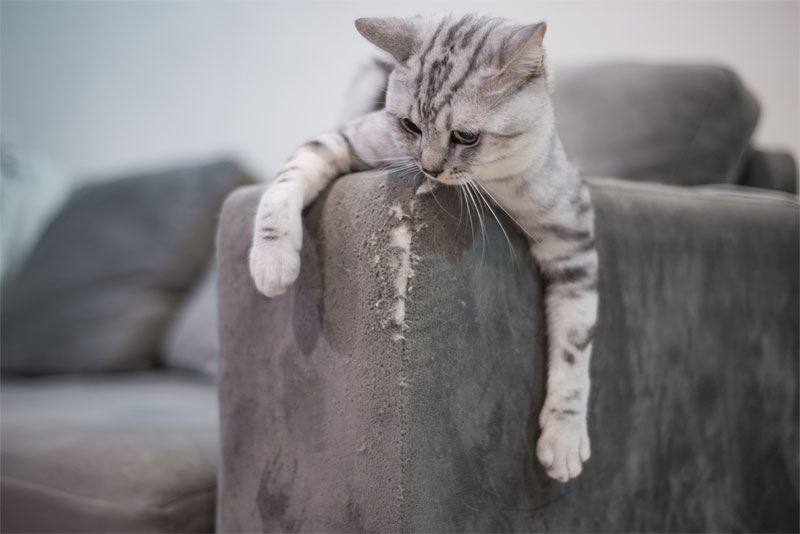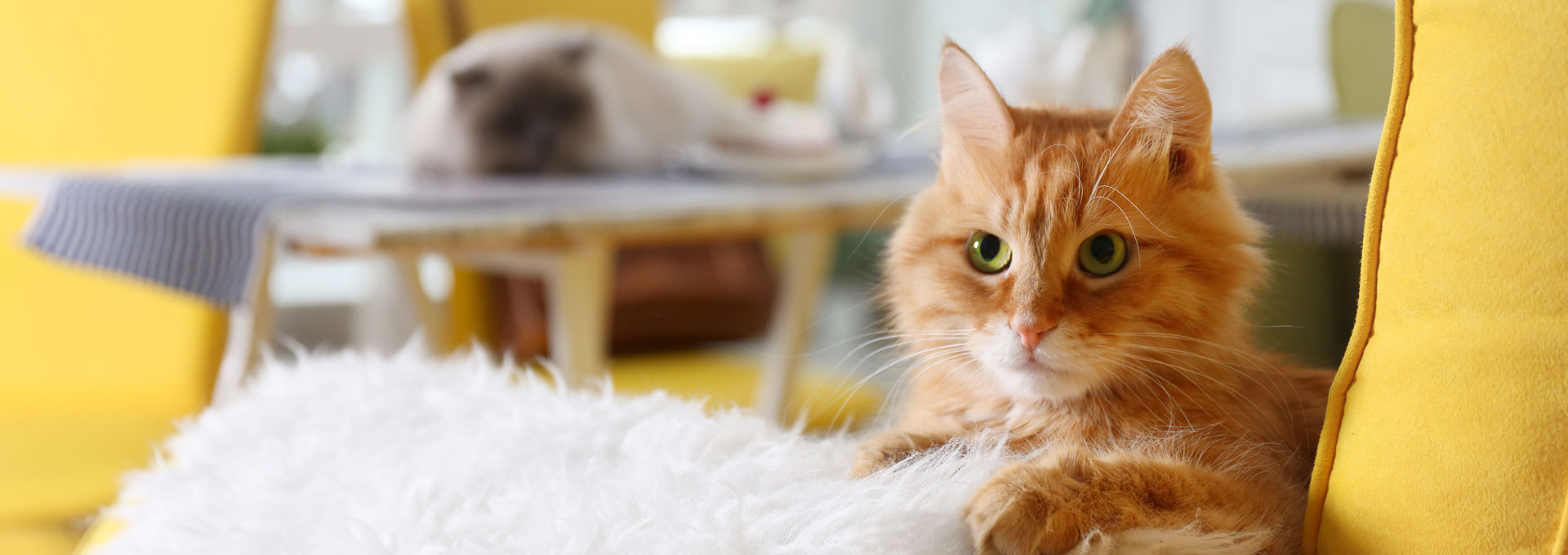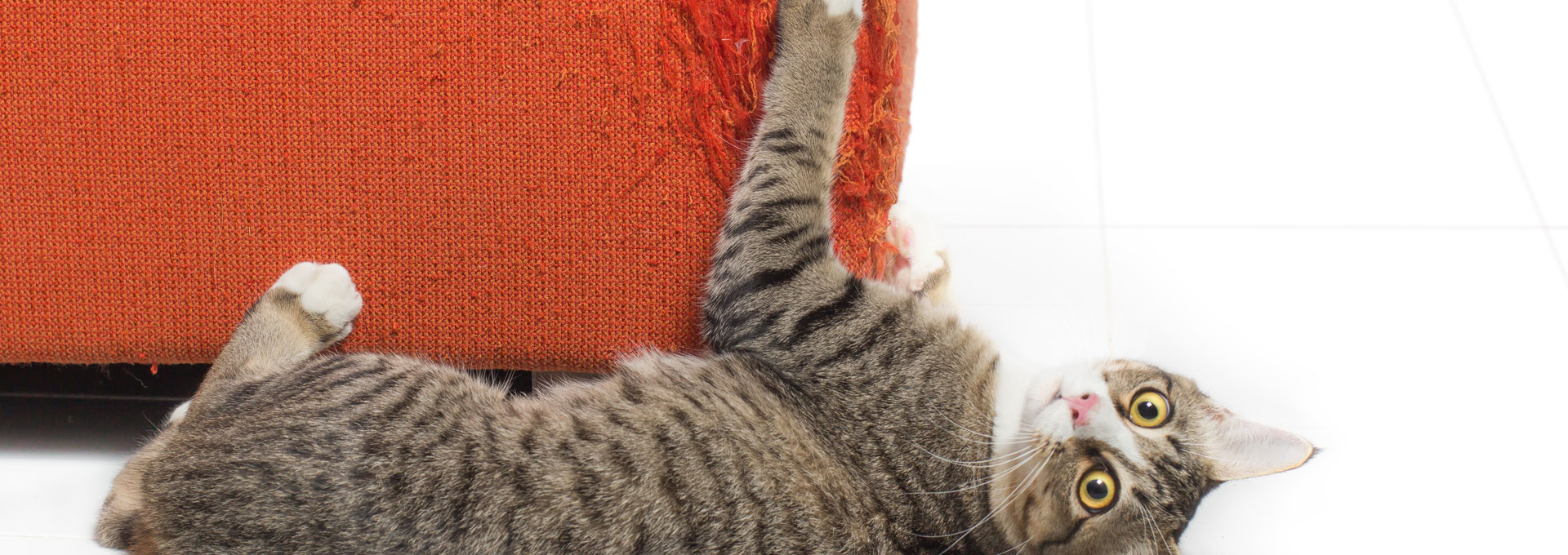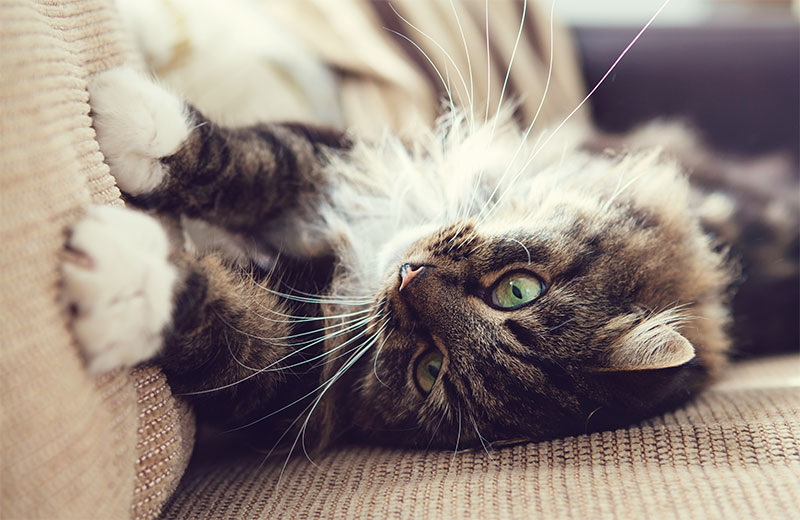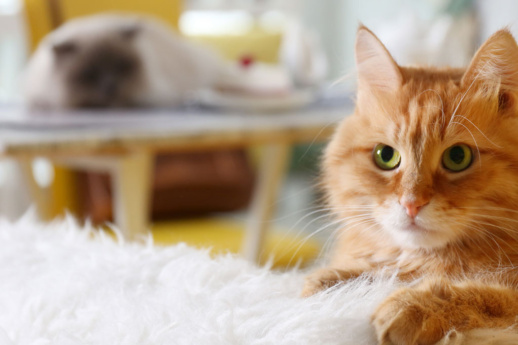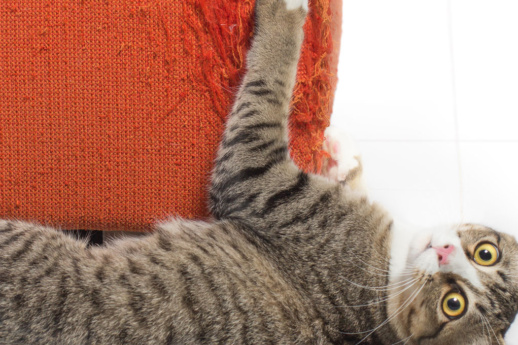How to Stop Your Cat from Scratching
Protecting your home from your cat’s claws can be a real challenge. While many humans try to fight the good fight in the name of having nice things, others simply give up and let the cat scratch away.
However, there are some steps you can take to protect your tables, chairs, and couches from your cat, and you can start by understanding why your cat wants to scratch the furniture in the first place.
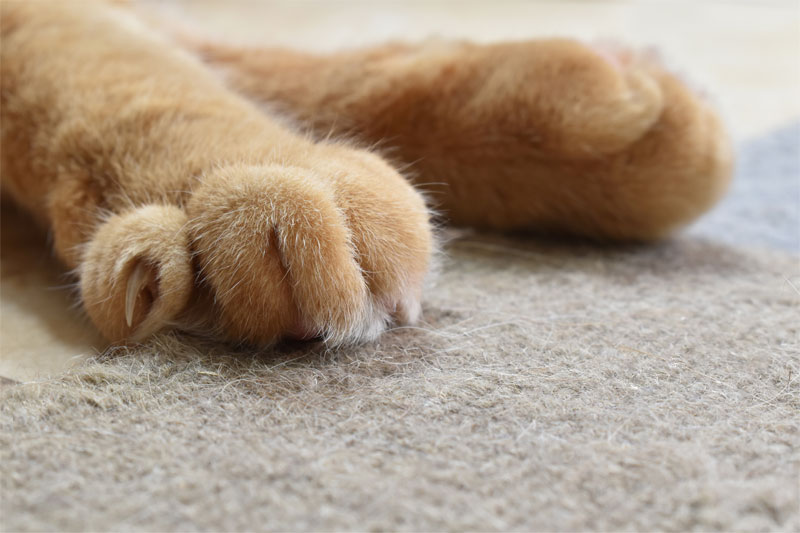
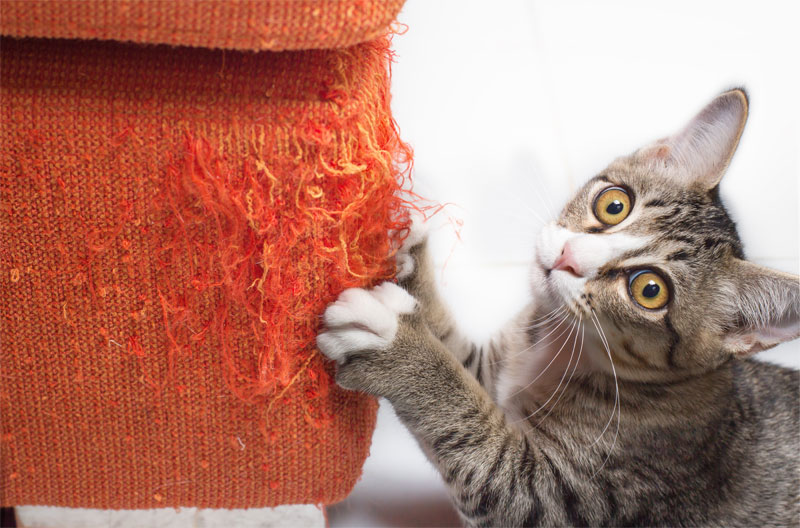
Why Do Cats Scratch?
When a cat scratches, it leaves behind its scent and marks territory. Cats also scratch as a form of play, to stretch better, and sometimes out of stress or boredom.
6 Ways to Keep Your Cat From Scratching
1. Provide Alternatives
If you don’t want your cat scratching in the house, provide better alternatives like a variety of cat scratching posts. Choose scratching posts and pads that feature different materials, angles, and the attractive scent of catnip.
2. Spray Citrus
Cats don’t like the smell of citrus. Dilute a bit of orange, grapefruit, or lemon oil in water and spritz your home (especially furniture) with it.
3. Hang Foil
Cats don’t like the sound or feel of aluminum foil and hanging some in high-scratch zones makes scratching less attractive and satisfying for your cat.
4. Calm Your Cat
Your cat might be scratching because he is stressed. Try a calming pheromone spray to help your kitty chill.
5. Use a Furniture Guard
There are a variety of products available that are designed to protect your furniture from cat claws. They range from vinyl covers to actual furniture-corner-shaped cat scratchers.
6. Try Soft Paws
If scratching persists, get a pair of Soft Paws, vinyl claw covers, for your cat’s claws. It’s a safe and humane alternative to declawing that renders your cat’s household scratching harmless.
Learn More About Your Cat's Behavior Issues With Our Veterinarian in Pensacola
If you feel like you’ve tried everything, and your cat is still having behavior problems, we encourage you to schedule an appointment at Olive Branch Pet Hospital. Behavior issues can sometimes be an indication of a health problem, and our veterinarian can help you rule out underlying issues and address the problem at hand.
To learn more or schedule an appointment for your cat, please contact us today.
